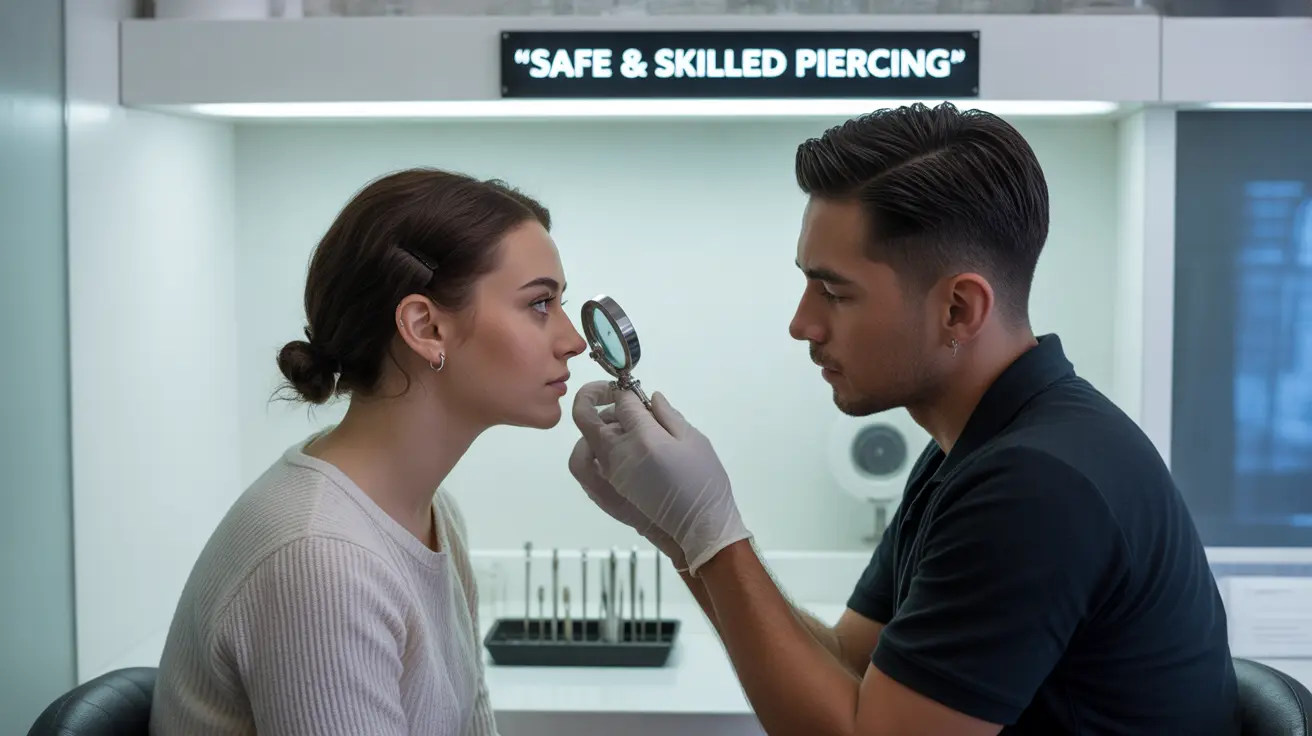If you're considering re-piercing your ears, whether due to closed holes or unsatisfactory previous piercings, it's crucial to understand the proper methods and potential risks involved. This comprehensive guide will help you make informed decisions about re-piercing your ears safely and effectively.
While some people attempt to reopen old piercings at home, understanding when to seek professional help and following proper aftercare protocols can make the difference between a successful re-piercing and potential complications.
Understanding Ear Re-Piercing Options
Re-piercing ears involves different considerations than initial piercings, particularly when dealing with existing scar tissue or partially closed holes. Professional piercers have the expertise to evaluate your specific situation and recommend the best approach.
Professional vs. DIY Re-Piercing
While it might be tempting to attempt re-piercing at home, professional piercing offers several important advantages:
- Sterile environment and equipment
- Proper placement and technique
- Expert assessment of scar tissue
- Professional-grade jewelry selection
- Immediate aftercare guidance
Evaluating Your Old Piercing Site
Before proceeding with re-piercing, it's essential to assess the condition of your previous piercing:
- Check for complete healing of old piercing
- Look for signs of scarring or keloids
- Ensure there's no active infection
- Consider how long the previous piercing has been closed
Safe Re-Piercing Practices
Whether you choose professional or at-home methods, following proper safety protocols is crucial for successful re-piercing:
Professional Re-Piercing Process
When visiting a professional piercer, expect the following steps:
- Initial consultation and site evaluation
- Sterilization of the area
- Precise marking of piercing location
- Use of appropriate piercing tools
- Professional jewelry insertion
- Detailed aftercare instructions
Aftercare Guidelines
Proper aftercare is essential for preventing infection and ensuring proper healing:
- Clean hands before touching the piercing
- Use saline solution for cleaning
- Avoid touching or rotating the jewelry
- Keep hair and cosmetics away from the site
- Watch for signs of infection
- Maintain regular cleaning schedule
Special Considerations
Certain situations require extra attention when re-piercing ears:
Dealing with Scar Tissue
Scar tissue from previous piercings can affect the re-piercing process. Professional piercers can evaluate whether it's safe to pierce through or near existing scar tissue and recommend the best approach.
Post-Surgery Re-Piercing
If you've had earlobe repair surgery, following proper healing timelines is crucial before considering re-piercing. This typically requires several months of healing time to ensure the best results.
Frequently Asked Questions
How can I safely reopen a partially closed ear piercing at home? While professional help is recommended, if attempting at home, thoroughly clean the area and jewelry with saline solution, and gently try inserting a sterilized earring. If you encounter resistance or pain, stop immediately and seek professional help.
When should I see a professional for re-piercing my ears instead of trying it myself? See a professional if your piercing has been closed for several months, if there's significant scar tissue, if you're experiencing any infection symptoms, or if you can't easily insert jewelry through the existing hole.
Can I get my ears re-pierced in the exact same spot, especially if there is scar tissue? Yes, but it should be evaluated by a professional piercer. They can determine if the scar tissue will affect the new piercing and may recommend slightly adjusting the location if necessary.
What are the best practices to prevent infection and ensure proper healing after re-piercing ears? Clean the area twice daily with saline solution, avoid touching the piercing with unwashed hands, don't remove the jewelry during healing, and watch for signs of infection such as excessive redness, swelling, or discharge.
How long should I wait after earlobe repair surgery before getting my ears re-pierced? Most professionals recommend waiting at least 6 months after earlobe repair surgery before re-piercing. This allows adequate time for complete healing and reduces the risk of complications.




